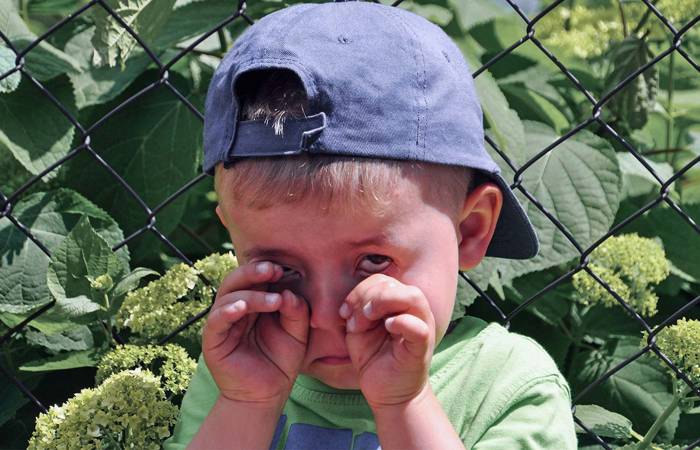Like what you see?
Sign up to receive more free parenting advice.
Thank you for subscribing to our newsletter!
Child Development

Credit: iStock.com/Lisa5201
Dr Justin Coulson is the co-host of Channel 9’s Parental Guidance, a three-time bestselling author, a TEDx speaker, and one of Australia's most popular parenting experts. In this article he looks at nine ways to stop using threats with your children.
A pufferfish is a fairly poor swimmer (for a fish) and is therefore an easy target for predators. But the pufferfish has a superpower. When threatened, it ingests huge amounts of water (and sometimes air) into its very elastic stomach, suddenly appearing several times its original size.
There’s a parenting practice that I call “pufferfish parenting”. At times we can be fairly poor parents (no judgment here, just the reality of life), and we can therefore seem like an easy “target” for a toddler or preschooler. Our response when our position of authority in the family hierarchy is threatened is often like that of the pufferfish. We make ourselves appear much larger and more threatening than we really are. We puff ourselves up. We put on our angry face. We use our loud voices. And we threaten our children with destruction and oblivion - or at least something that feels like that to them - so they will comply with our instruction. (And in our case it would be unhelpful to consider this a superpower.)
“If you don’t get back into the car right now we are never… NEVER… coming to the park again.”
“Stop fighting back there or I’ll turn the car around and the holiday is cancelled.”
“If you can’t do the simple things I ask you to do, I can’t take you to your friend’s party.”
“If you keep being naughty, Santa Claus won’t bring you any presents.”
I’m not really suggesting that we’re poor parents, or that our children “target” us. Rather, I’m pointing out that we all have our moments with our children and when we have those moments we often blow up - or blow things up - disproportionately, sometimes causing harm in the process.
Draw a picture of a house
When I deliver presentations to parents I have a favourite activity. I ask everyone to draw a picture of a house. Everyone does the same thing. We laugh together as I ask why we are all still drawing the same house we drew when we were six. The answers come quickly and easily.
- It’s simple
- It’s quick
- It’s how I was shown
- It’s not very good but it’s a representation of what a house looks like
- I don’t have the skill to draw something better
Now for a hard truth. Most parents in Australia discipline the way they draw houses.
Lousy.
And the reason for it is pretty simple. According to research, the average parents’ discipline strategies (which, for our toddlers, consist of lots of threats and time-outs) are quick and simple. They’re consistent with how we were shown discipline as children. They’re not very good, but we think they represent what discipline might look like. And the reality is that we often don’t have the skills to discipline any better.
The real reason we rely so heavily on threatening our children is because we’ve lost control and we don’t know what to do. So we become pufferfish parents. Our authority is threatened and the only way we can retain control is to make ourselves big and scary. As parents, we rely too heavily on control via punitive disciplinary methods. Threats are at the top of the list.
Threats don’t require much of us though. Threats don’t demand any perspective or empathy. Threats don’t ask us to be compassionate. Threats don’t encourage creativity or kindness. They don’t make us try to be better. They simply call for compliance.
Authoritarian parents use threats a lot. That’s no surprise. Implicit in the “my way or the highway” approach is threat. An interesting research finding, however, is that permissive parents are also highly likely to use threats. It’s just that they don’t carry them out.
And here’s the thing. That threat? It doesn’t really work. Sure you might get short-term compliance. But it comes with baggage.
Threats don’t require much of us though. Threats don’t demand any perspective or empathy. Threats don’t ask us to be compassionate. Threats don’t encourage creativity or kindness. They don’t make us try to be better. They simply call for compliance.Dr Justin Coulson
Stay up to date with the latest news and articles from First Five Years
Thank you for subscribing to our newsletter!
Threats undermine trust
To a child, threats feel icky. They feel scary. They feel unstable and volatile. Sometimes they even feel like that for the adult making them.
And that’s for one central reason.
Threats undermine the relationship of trust that is so central to creating a secure attachment relationship between parents and children. When we threaten a child it feels like our love is conditional. It creates a fear that love - and the entire relationship - could be in jeopardy if a child is non-compliant. The more extreme the threat, the more fear is created in the child.
If a parent threatens a child who has a submissive temperament, they’ll comply. In the mind of the adult, this reinforces the threatening behaviour. As parents we say to ourselves, “I guess I’ll just have to up the stakes if they say no to me.” Threats become our “go-to” tool in the toolkit. There are a couple of problems with this:
- We become increasingly punitive and aggressive towards our children. That makes us less effective parents.
- Our children start to become less likely to change behaviour as they become inoculated or desensitised to our threats. They’re no longer afraid after a while. And they actually start to react with defiance to our pufferfish parenting. This creates a vicious circle of defiant refusal and challenging behaviour from a child leading to pufferfish threats from a parent which exacerbates further defiance which escalates threats, and so the cycle increases until someone stops the cycle. Typically it’s the parent becoming so big and scary that the child relents. It should go without saying that this is not good for the relationship.
Understanding motivation
If the only reason behind our child’s decision to do the ‘right’ thing is their fear of our threats, we’ve got a problem. Our job is to help our children understand why we are asking for things, and to help them recognise the value in that request.
Extrinsic motivators - like threats - only work when someone is there to police behaviour. Once we’re not there, the behaviour we want disappears.
We see intrinsic motivation when our child actually wants to do something.
This means that if we have a child who is resistant to our requests, it’s not our job to force them to comply. It’s our job to work with them until they understand and ‘buy’ what we’re suggesting.
Correcting mistakes
Since we’re all going to get it wrong and make threats from time to time, let’s examine the best way to clamber out of the hole we might have dug for ourselves.
- Recognise the need for a restart
- Apologise
- Re-connect and repair your relationship
- Work on a strategy with your child to work through the “issue” that led to threats in the first place
Smack my bum!
Some years ago I watched as a mum demanded compliance from a disruptive two-year-old. The child refused to follow mum’s demands. Mum got louder. The child stamped her foot defiantly. The mum made a threat: “If you don’t do what I’m asking you to do right now Paris, I’m coming over there and I’m going to smack your bum.”
Paris turned to her mum, stuck her bum out, whacked it twice herself and chanted “Smack my bum!”
If we get to the point that we are threatening our child, we are not setting boundaries well. And we’re now embedded in a power struggle that could set the foundation for the next 15-20 years of interactions with a resistant child. This is not healthy, and it doesn’t lead to happy families or happy outcomes. (Besides, sometimes we discover that our children call our bluff and we feel like we have to follow through on a threat that we’re not really prepared to follow through on. Remember the threat that the holiday is cancelled or we’re never going to the park again?)
How to stop threatening the kids
As parents we need practical tips and strategies to improve our parenting and help our children make positive behavioural choices because they want to, and not because they’re scared of what we will do to them if they don’t. The following strategies will help you yell less, and connect more while still moving in the right direction together:
1. Make it a game
Kids love to play. And they love being in our world. Singing songs, playing, and finding joy in things that aren’t that fun can make it fun.
2. Do it together
Sometimes we expect our children to comply but they’re overwhelmed. They’re tired, stressed, or just not in the mood. Being in their world can change their willingness to participate in what needs to be done.
3. Manage Expectations
Don’t ask your child to do what they can’t reasonably do based on their level of development and maturity, particularly when they’re tired and hungry.
4. Stay Level
Emotions are contagious. Your children will catch your cranky and your chaos. But they’ll also catch your calm.
5. Explain what you want in positive terms
We want fewer “don’ts” and more “do’s”. It can be confusing to remember what not to do plus what to do. Focus on the to do. It works better.
6. Give transition warnings - frequently
Children respond to behavioural requests best when they know they’re coming and they have time to prepare.
7. Create margin
When your child has time to adjust, settle, and feel like things are safe and predictable, they’re more likely to be responsive to your requests.
8. Smile when you speak
It’s really hard to be threatening when you have a warm smile and soft eyes.
9. Remember, they have their L plates on
It’s hard being a child. The rules don’t make sense. They feel completely incompetent. And they really just want to have fun. They’re learning. And when they’re learning, being yelled at or threatened won’t help. We don’t toot our horns at learner drivers. Let’s not toot our voices at our kids while they learn how to be socialised.
Getting real
Is this stuff real? Sometimes yes. Other times no. There will be days when you literally have to pick up your child, wrestle their seatbelt over their arms, and drive to early learning while they scream. You can’t wait all day!
It’s horrible. All of the ideas in the world can help sometimes, but now and then you’ll have one of those days. But the more you practice the ideas above, the less of those days you’ll have. And the less likely it is that you’ll turn into a pufferfish while you’re making stuff happen.
Is it exhausting? Sometimes, yes.
But it doesn’t last forever. And it will make the time you have together much more connected.








